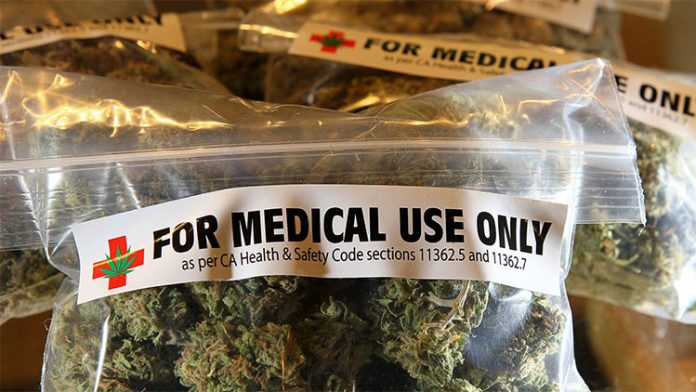California’s new recreational cannabis marketplace is reviving interest in a little-known document created 15 years ago to give medicinal pot users something to show law enforcement: a state-issued medical marijuana identification card.
Marijuana’s legalization for all adults 21 and older was effective Jan. 1, and is creating a new demand for the IDs because cardholders don’t have to pay sales or use taxes at dispensaries — which can run between 7.125 and 10.125 percent, plus local cannabis business taxes, which in Santa Rosa is 3 percent.
The challenge is getting one.
County health departments run the state program, and in Sonoma County, the waitlist for an appointment to apply for a card is months out. The next available appointment is in June, health department spokesman Scott Alonso said Monday.
“We’re seeing a tremendous increase in the amount of calls asking for appointments,” Alonso said. “We’re booked.”
Based on a San Francisco medical marijuana user registry program, the laminated state identification card never truly gained traction among medical marijuana users since it was created in 2004.
At its peak in the fiscal year ending June 2010, only about 12,700 people had acquired one in a state with about 37.5 million people. Today, the number of cardholders has declined by 70 percent to fewer than 4,000 cardholders.
A medical marijuana user or a qualified patient caregiver can apply for cards.
Over the past decade, criminal penalties for possessing small amounts of marijuana were eliminated or greatly reduced, and the need for documentation other than a doctor’s recommendation declined, said Dale Gieringer, state coordinator of California NORML.
The popularity of the card had as much to do with how easy or difficult it was to get one, and that depended on the county health department, said Dale Gieringer, state coordinator of California NORML.
“It was a difficult thing to get, and what does it protect you from, really?” Gieringer said. “Really, the idea of the card was to protect you from arrest by the cops.”
Some people are reluctant to provide personal information about their use of marijuana to a government agency at a time when the plant is still banned by the federal government.
But the program was designed with that concern in mind. A California Department of Public Health spokeswoman said the agency doesn’t keep any personally identifying records. A card shows a person’s photograph, an expiration date and unique identification number. A law enforcement officer can use the unique number to verify the card is valid and not expired.
Alonso said the county health department doesn’t keep copies of applications, and staff send only the recommending doctor’s medical license to the state in order to ensure it’s valid.
San Francisco issued the most cards of any California county over the years — 23,068 — compared with Los Angeles, a city with more than four times the population, where health officials issued a total of 10,007 cards since 2004, according to state data from 2004 through January.
Sonoma County health officials have handed out 2,419 cards since 2004, and Mendocino County has issued 2,888 cards.
The backlog of appointments is troubling for people with medical conditions who rely on marijuana because they are the least likely to be able to afford the new slew of state and local taxes associated with new regulations, said Sarah Shrader, chair of the Sonoma County chapter of Americans for Safe Access.
“That means that patients cannot afford their medicine anymore, and they’re looking for any discount they can get,” Shrader said.
A person must first get a doctor’s recommendation to use marijuana for a medical condition then bring that document to a county health department office to apply for the state card, which typically costs about $100, depending on the county. The cost of a medical marijuana card is $94 in Sonoma County, or $47 for people with Medi-Cal coverage. It’s $100 in Mendocino County and $50 for Medi-Cal patients.
In Sonoma County, the health department has increased the number of appointments from four to six starting this week, and has trained additional staff to handle the intake appointments, Alonso said.
People must bring proof they live in Sonoma County, a doctor’s recommendation, a completed application and payment.














